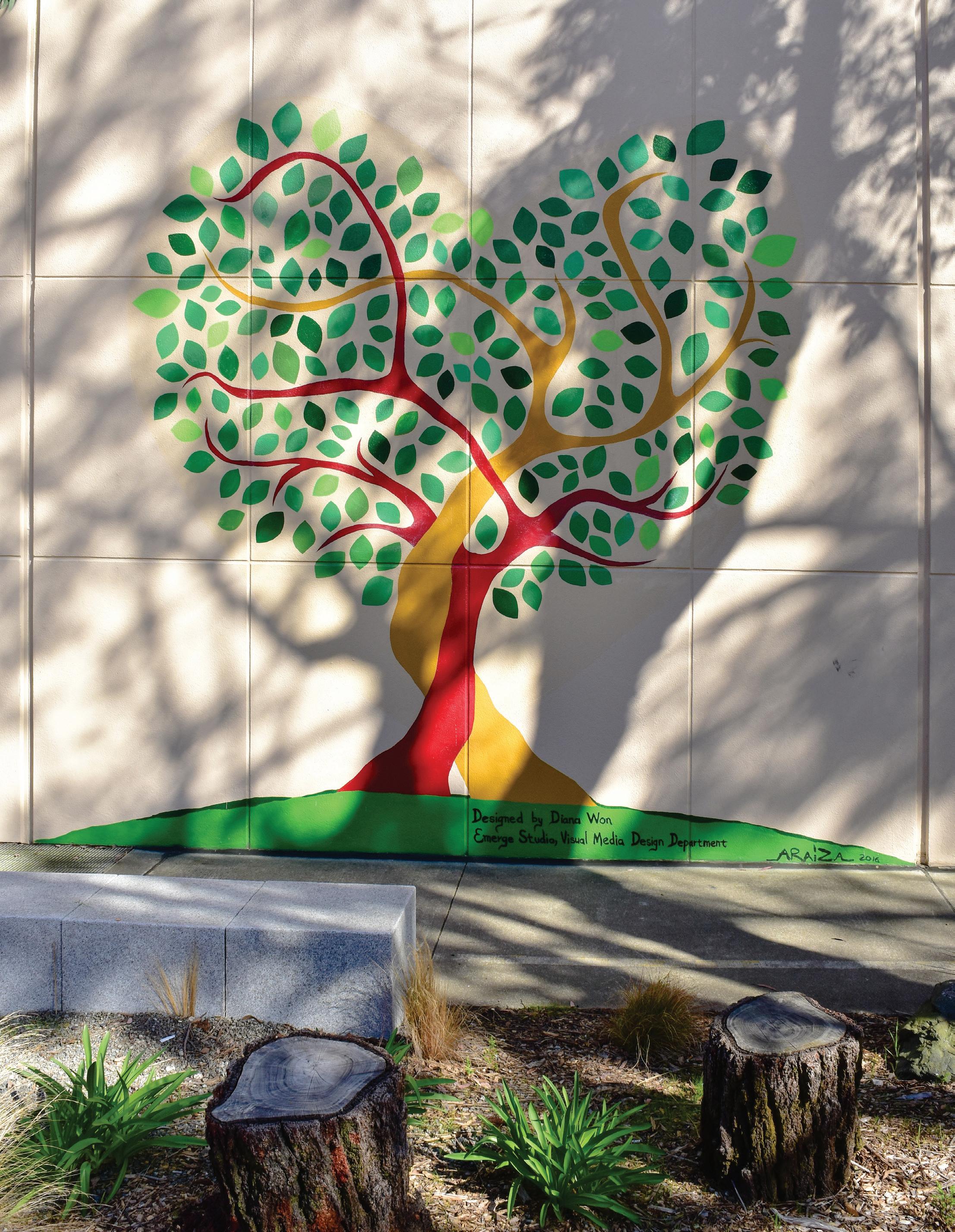
7 minute read
NO MORE SILENCE.
Project SURVIVE dismantles rape culture through the power of eduction and community
Story and Illustrations by Jennifer Yin
Advertisement
Pinned to the wall outside of Project SURVIVE’s o ce in City College of San Francisco’s Cloud Hall, photos depict smiling students and peer educators. Below the photos, stacks of pamphlets recommend resources and centers for people who need them. Inside the o ce, Adele Failes-Carpenter, the current coordinator of Project SURVIVE, which stands for Survivors Unite to Resist Violence, Intimate Violence Everywhere, sits at her desk to review this week’s work schedule for the program’s peer educators.
Project SURVIVE is a peer-led sexual violence and healthy relationship program that educates City College students on topics that range from demystifying misconceptions about rape and rape culture to identifying signs of abuse.
According to the Rape, Abuse and Incest National Network for every 1,000 rapes, 384 are reported to the police, 57 result in an arrest and 11 are referred for prosecution. Only seven result in a
NO MORE VIOLENCE.
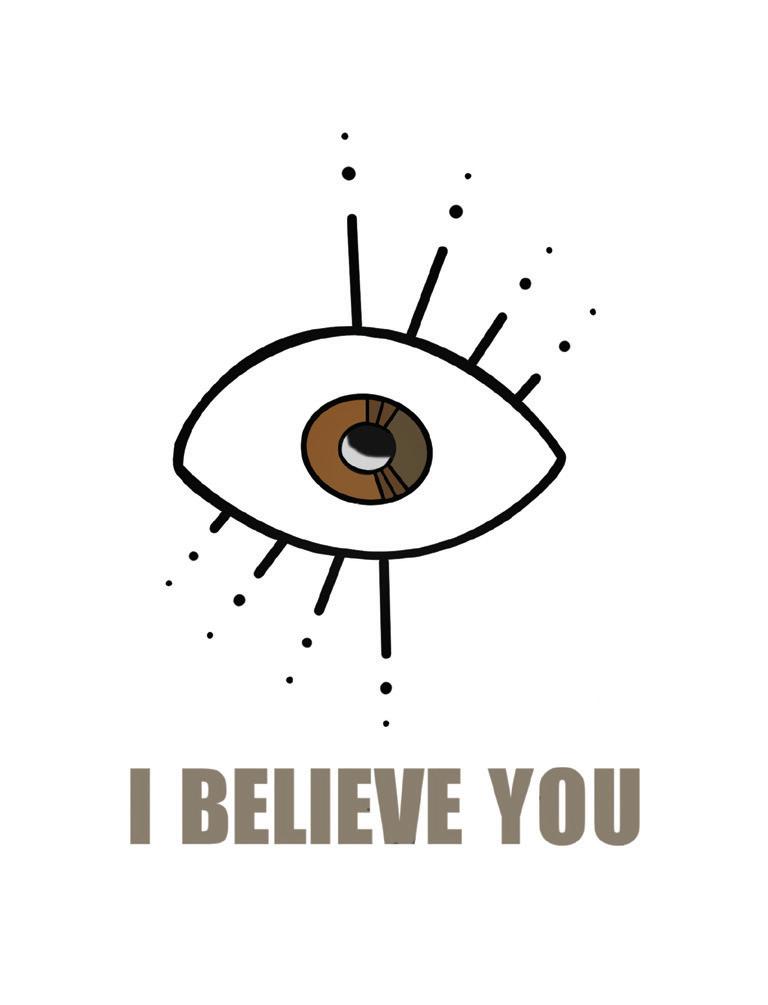
felony conviction and a mere Another peer educator Peter Piñon was sexually molested at six out of a thousand result in the age of 14. Reliving his experiences during legal proceedings 10 incarceration. years later was traumatizing. e Centers for Disease “I found it very hard because I was raised in the Monterey area, Control and Prevention, so it’s a small community. Everybody knew about the whole thing. CDC, reported that at least My friends knew and my family knew ... He was a baseball coach one in seven children in the and he was loved by the families,” Piñon says. United States experienced Piñon’s case is an example of the breakdown of social power. child abuse and/or neglect e perpetrator’s higher standing within the community gave in 2018 alone, killing nearly him more social power compared to Piñon. is imbalance ulti1,770 children. Rates of mately resulted in a hung jury, meaning the jurors couldn’t come child abuse are ve times to a verdict. higher for children in Social power is a key component of the teachings of the peer families of low socioeco- educators. Project SURVIVE de nes social power as anyone who nomic status. Programs is in a place or position to abuse others. like Project SURVIVE aim to reduce these statistics by work- In 2006, Simon, with the help of Project SURVIVE’s peer eduing directly with vulnerable cators, created the program, Expect populations. “I can’t be running anymore. I am Respect SF. Designed for high Project SURVIVE was founded in 1993 by Leslie Simon, an going to do this for people that school students, this program is now taught in all public institutions instructor for the women and gender studies department. During the organization’s rst weren’t believed. I’m going to do this for people that don’t have a voice.” within the San Francisco Uni ed School District. Peer educator Veronica Fulbright year, Simon and the program’s rst peer educator, student — Peter Piñon worries for the children who won’t receive sexual education. “A lot of Patty Zevallos together completed approximately 60 presenta- younger kids unfortunately have probably su ered from sexual tions. Nowadays, Project SURVIVE’s 11 trained peer and domestic violence,” she says. “I educators are able to do an estimated 400 presentations each de nitely worry because if you’re not getting this awareness academic year. then you’re not going to ever know that there’s
To become a paid peer educator, one must complete or be things out here to help you.” concurrently enrolled in Women’s and Gender Studies, WGST 54: Project SURVIVE Politics of Sexual Violence and WGST 55: Ending Sexual Violence. helps educate the A er completing the courses, peer educators can be hired by the City College college as either a lab aide or through a federal work-study procommugram. Enrolled students also have the opportunity to obtain their nity sexual health educator certi cate. ere are scholarships available for undocumented students, who want to make contributions as peer educators but cannot be paid through the other two avenues.
Some peer educators are survivors of sexual violence themselves and nd the Project SURVIVE community to be a safe haven for their own healing and growth. Faith Fabiani became a peer educator as a way to separate herself from a controlling and abusive relationship in her past. “I felt like I had no one,” says Fabiani, who had to isolate from her community in order to escape her abuser.
She attributes her turnaround to Project SURVIVE and Simon’s classes. “I’d probably be dead, still on the streets or in prison,” Fabiani says. “I needed to feel welcomed and at home.”
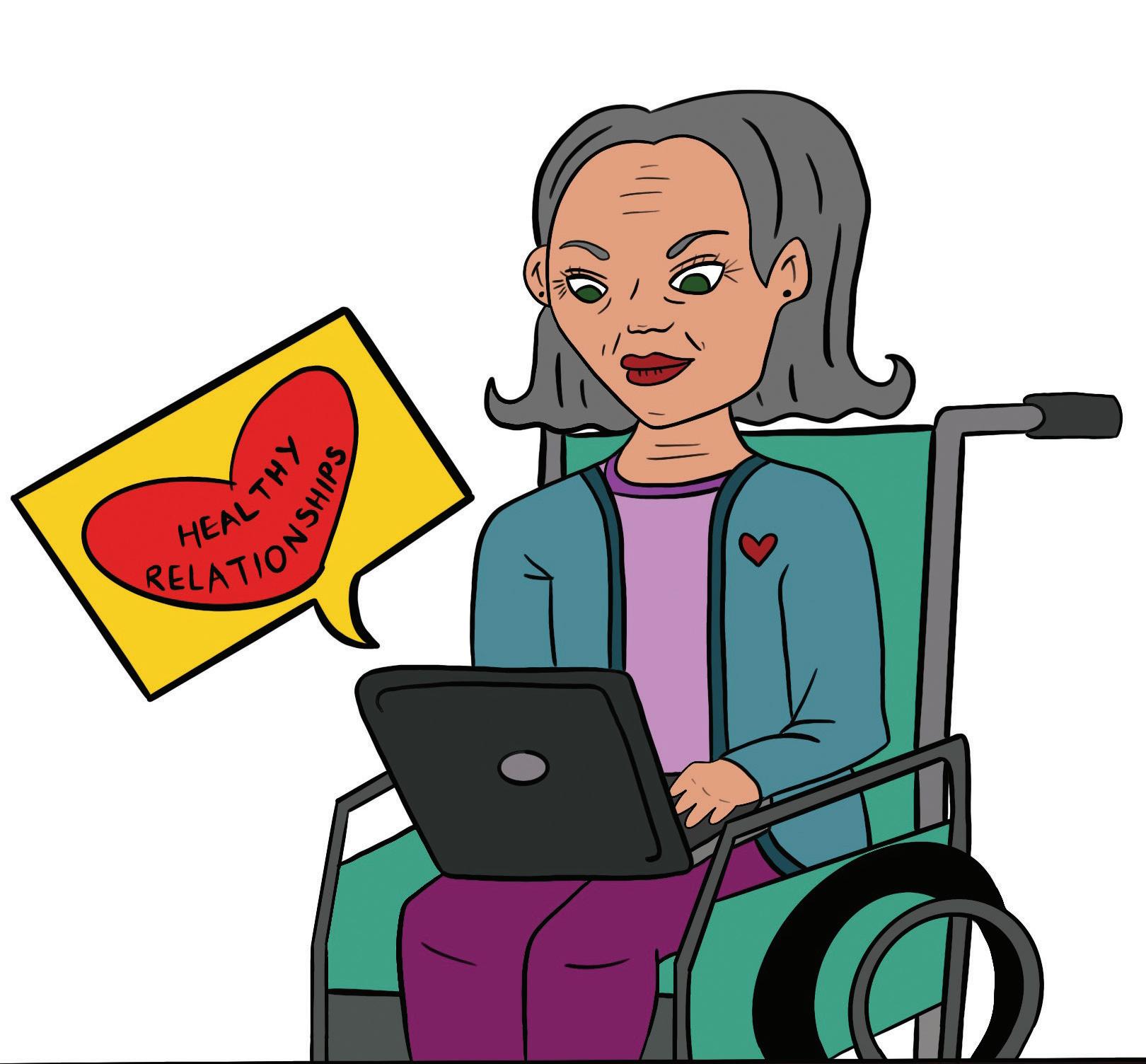
through presentations. Peer educators will go into a variety of di erent classes and give a quick lecture on sexual violence, abuse and prevention. e intention of the presentations is to have a conversation with student audiences.
Peer educators stress to students that rape is nobody’s fault but the abuser’s. ey discuss how rape can a ect anyone no matter their race, sexuality, ethnicity, demographics or income. During presentations, they share and debunk rape myths from Project SURVIVE’s “Your Guide to Healthy Relationships” handbook.
Presenters make a point to discuss the speci cs of date rape too. Peer educators, like Dale Smith and Taylor Strommel, role play in an exercise called “Pat and Chris,” to teach students about risk reduction before and during a date.
Since the pandemic, Project SURVIVE has transitioned from in-person to online presentations via Zoom. e online version consists of two peer educators, one tech moderator and Failes-Carpenter as host.
Coordinator Adele Failes-Carpenter sits in Project SURVIVE’s ofce in City College’s Cloud Hall, on Ocean Campus where she regularly meets with the peer educators. (Jennifer Yin/Etc Magazine)
Students tune in remotely to see a red students are asked to brainstorm for glowing heart appear on the middle of phrases that describe what they seek in their screen. Etched in the center are a healthy relationship: mutual respect, the words “Healthy Relationship.” en loyalty, healthy arguments, boundaries,
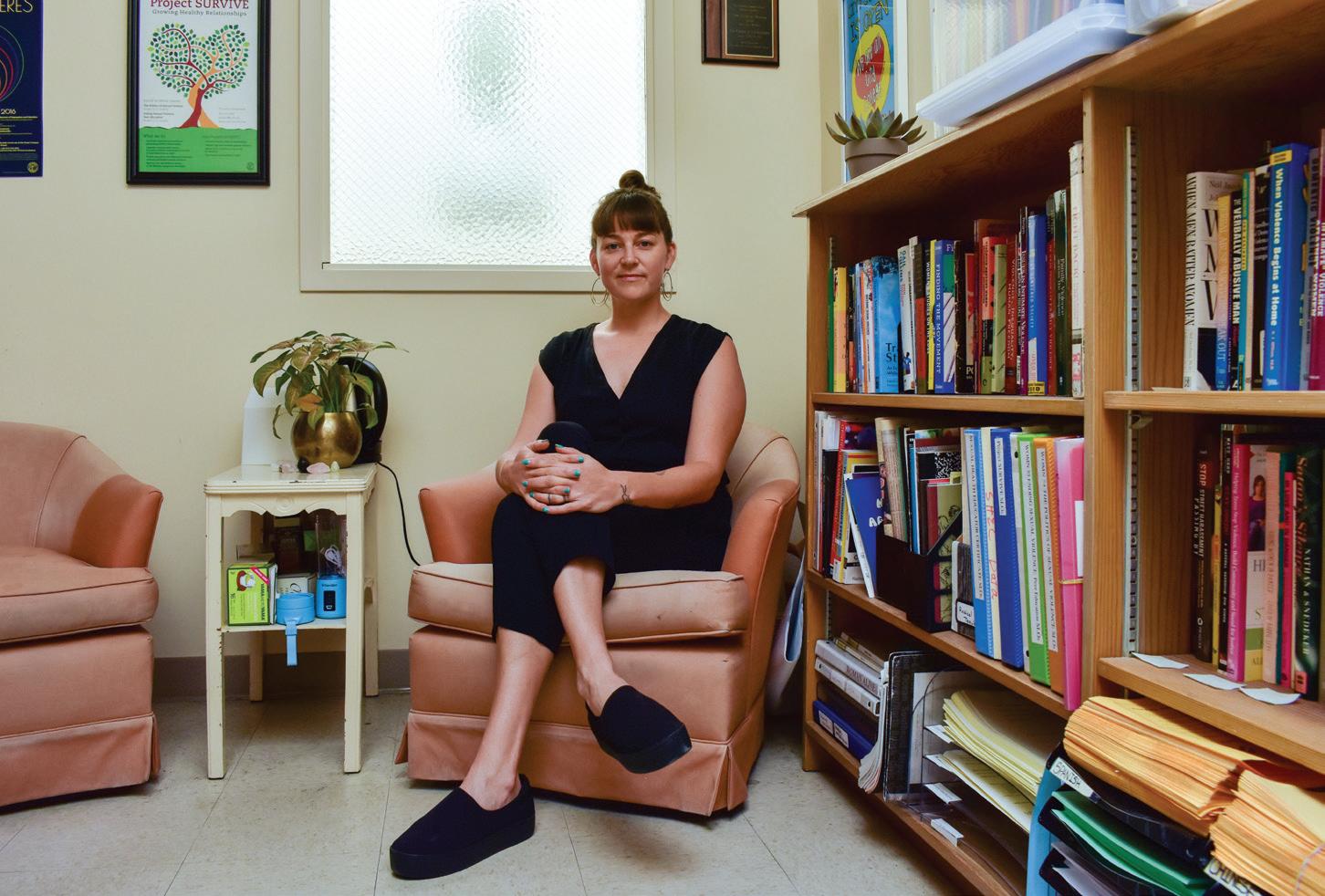
Childhood friends, Rahsandrea Johnson. lef, and Veronica Fulbright, right, walk around the Bayview district wearing shirts advocatng for social justce. Johnson, a City College alum, is a graduate of Project SURVIVE. The two women hope to start their own educton program ttled, “Healing Hearts.” (Melvin Wong/Etc Magazine)
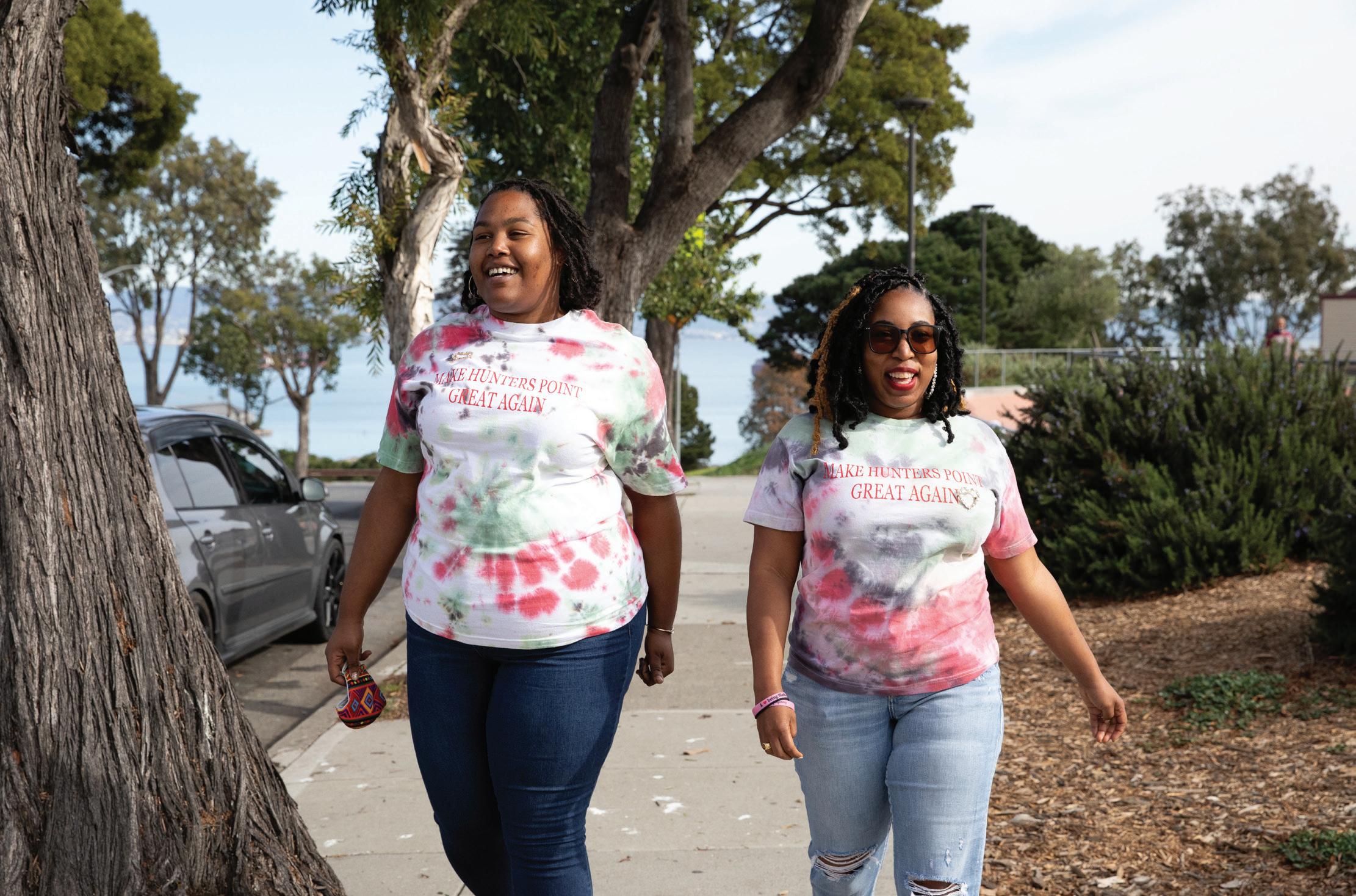
acceptance. e goal of the brainstorm is to teach students that before or worsen situations in homes where mistreatment and they each deserve to be treated with respect by their partners. violence is reoccurring.”
Over 100,000 students have bene ted from these presentations. Fortunately for now, Project SURVIVE was recently grant at’s 100,000 students in potentially healthier relationships. ed enough funds to carry them over to the Spring 2021 semester. When the accreditation crisis hit in 2013, the school sought to cut “ e administration supported Project SURVIVE during this disdown the program, but Project SURVIVE used their headcount tance learning period by awarding us enough to cover the request to persuade the administration that the program was e ective for synchronous presentations,” says Failes-Carpenter. and worth continuing to fund. Piñon, the peer presenter whose own case was initially thrown “A lot of younger kids unfortunately have probably sufered from sexual and domestc Now COVID-19 and the resulting campus-wide closure coupled with City College’s ongoing nancial crisis means Project SURVIVE, along with many other departments, must out, recently received some good news too. e FBI has since reopened the case due to more survivors coming forward. As he prepares to testify against his perpetrator, Piñon says, “My get creative to keep its peer educators violence. I defnitely worry because if you’re not initial instinct was to pack up compensated. getng this awareness then you’re not going to and jump ship Currently FailesCarpenter only ever know that there’s things out here to help you.” because that’s what I did 10 has a lab aide budget for the fall, and is — Veronica Fulbright years ago, but I’m 35 years old requesting funds now. I can’t be for the spring semester. She is supplementing the lab aide award running anymore. I am going to do this for people that weren’t with federal work study funds. believed. I’m going to do this for people that don’t have a voice. I
Meanwhile, the need for support programs like Project have to do it no matter if it’s going to hurt emotionally. I just SURVIVE is only increasing while students are sheltering in have to do it.” place. According to the Substance Abuse and Mental Health He hopes that his truth will help other survivors heal from their Services Administration’s website, “Major economic devastation past experiences and is thankful that Project SURVIVE contindisconnects people from resources and support systems. Such ues to o er students resources and a place to go where someone conditions may stimulate violence in families where it didn’t exist believes in them and will truly listen.
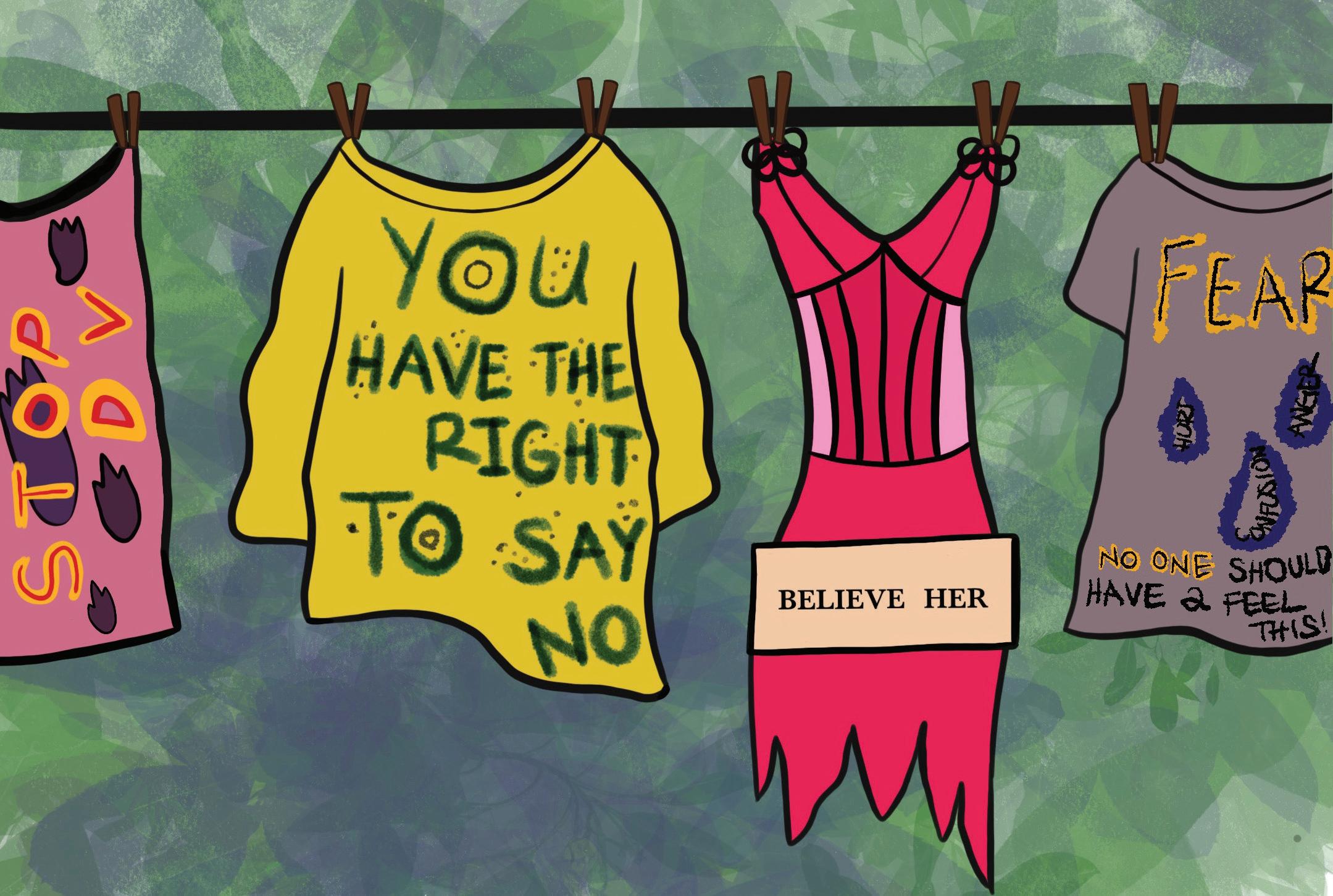
A tree casts its shadow over a mural of Project SURVIVE’s logo of a tree, designed in 2016 by Diana Won and painted by the Visual Media Design Department’s Emerge Studio. (Jennifer Yin/Etc Magazine)
